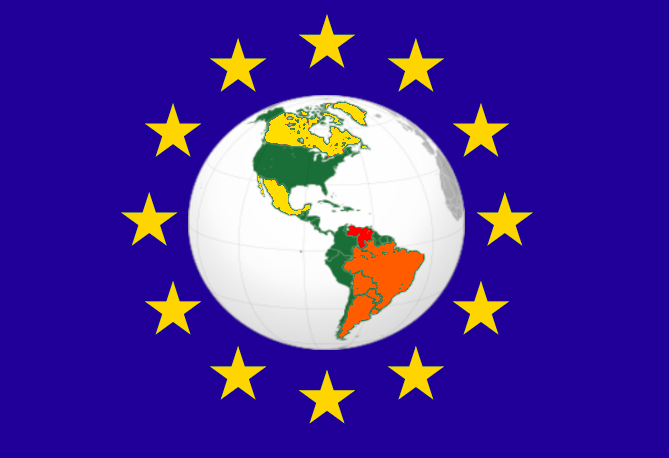Brussels – After Mercosur, Mexico, with a renewed agreement announced today (Jan. 17). The European Union expands its trade reach into an area of the world that has always been the subject of U.S. interests. For some, it is a show of strength by the President of the EU Commission, especially with regard to the free trade agreement with the countries of South America, which is a subject of criticism and reservations. Indeed, it demonstrates patience, ability, and a sense of strategy. The EU closes trade deals with the American continent before Donald Trump takes office in the White House, securing new partners while waiting to see how the next U.S. administration will move forward.
Of course, it will need the approval of the member states. But in the meanwhile, the EU executive continues to work on increasing its presence overseas. In 2016, the EU concluded the trade agreement with Canada (CETA), effective Sept. 21, 2017. A signature that thus allowed “made in EU” to penetrate the NAFTA area, the free trade area that includes Canada, the United States and Mexico. In early December last year, the announcement of the understanding with South American bloc countries ( Argentina, Bolivia, Brazil, Paraguay, Uruguay, plus Venezuela suspended). Now, the final piece that strengthens the EU in the face of Trumpian temptations of new tariff wars.
How the second Trump administration may respond remains to be seen. Will there be a sense of commercial “encirclement”, or instead, will this move, by putting the US in a corner, contribute to a new, more relaxed and confrontation-oriented approach with the Old Continent? Whatever the scenario, there is no doubt that the Commission has been able to achieve important milestones not only in economic-trade terms but even more so in geo-strategic ones.

EU trade puts the United States in a corner
Mexico is rich in zinc (the most used metal after steel, iron, and copper), copper (useful for electric motors, transformers, circuits, and electrical cables), antimony (essential for batteries and semiconductors), and manganese (valuable for high-tech applications, particularly in energy storage). Just looking at how much is at stake, limited to the European Green Deal alone, in this EU-Mexico agreement, there is no doubt that the Commission has accomplished a great deal. It is no coincidence that the announcement was greeted with great satisfaction by the European Parliament.
“In an era of increasing global uncertainty, this agreement will play a key role in strengthening political dialogue and enhancing cooperation to address complex transnational challenges, ensuring greater stability and prosperity for both the EU and Mexico,” is the comment of David McCallister (EPP), chairman of the Foreign Affairs Committee, Javi López (S&D), the Foreign Affairs Committee’s permanent rapporteur on EU-Mexico relations, and Antonio López-Istúriz White (EPP), the European Parliament’s head of delegation for Mexico.
Closing the trade deal with Mexico is an extra assurance in times of global uncertainties, an insurance for one’s immediate future given warnings of potential U.S. course changes. The EU has played it forward and seeks shields for its competitiveness. Now, the big question mark concerns the member states.
Ursula von der Leyen has woven her web, sending clear messages to Trump. This is no small thing.
English version by the Translation Service of Withub


![Bernd Lange, presidente della commissione Commercio internazionale del Parlamento europeo [foto: European Parliament]](https://www.eunews.it/wp-content/uploads/2024/12/lange-350x250.jpg)




